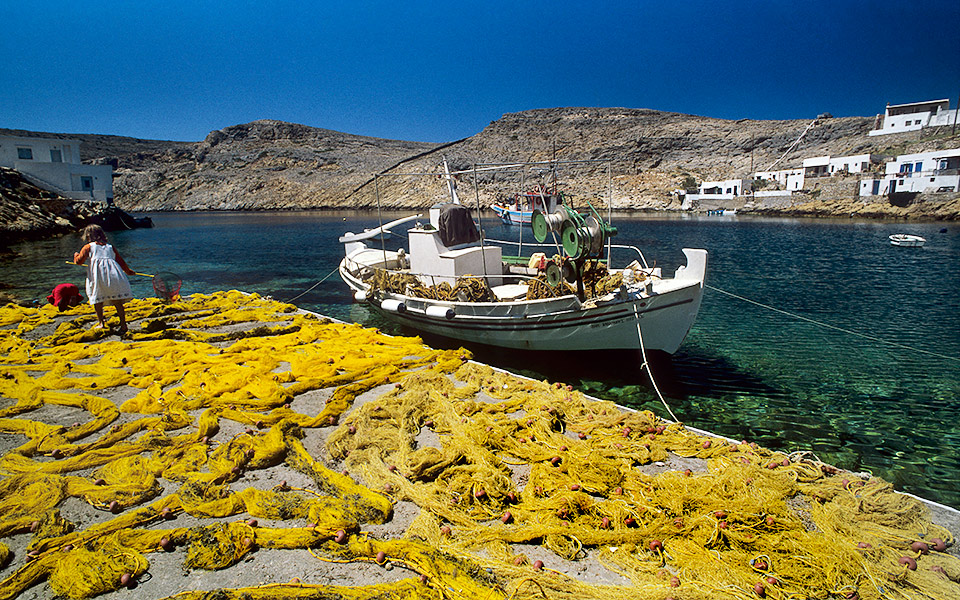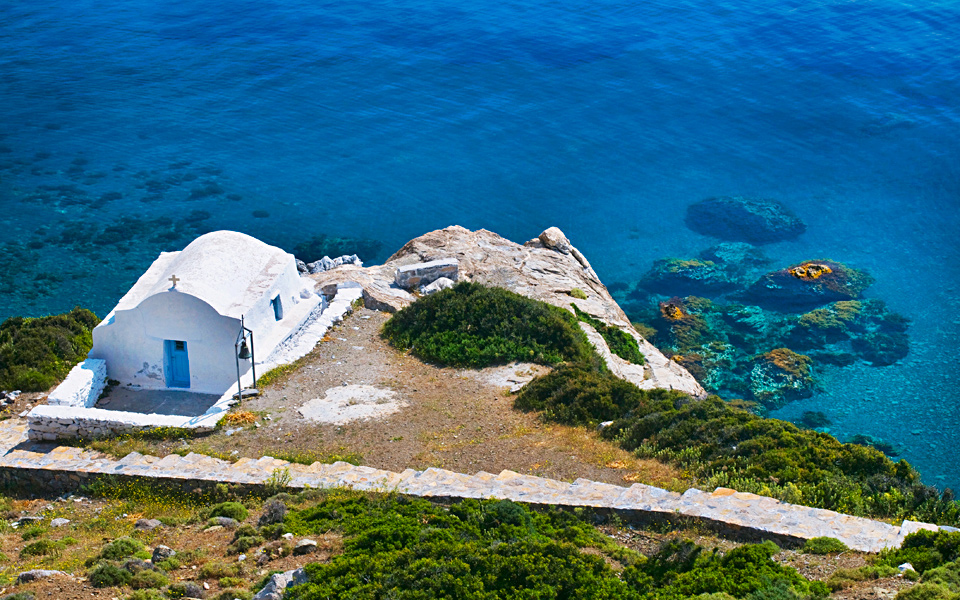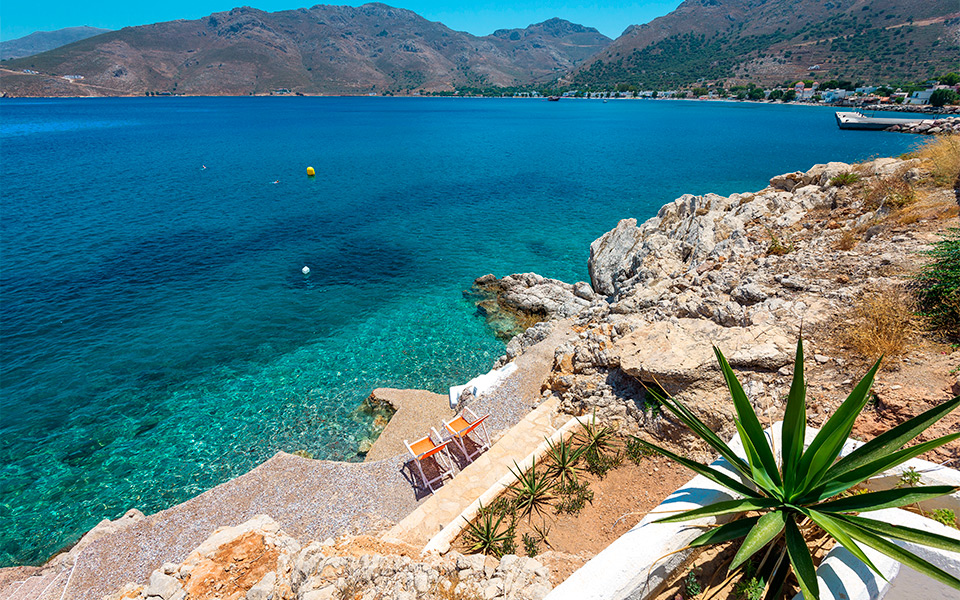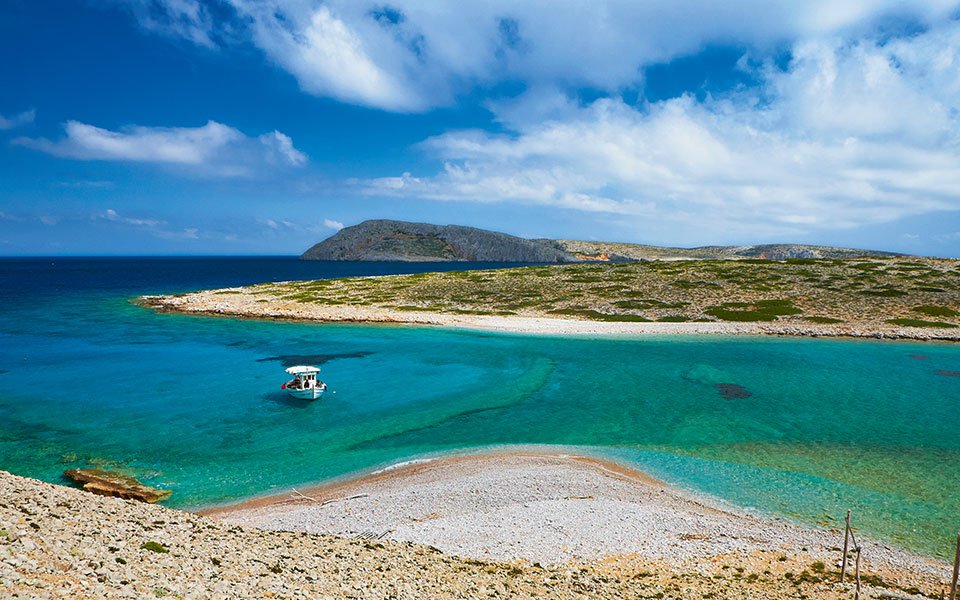As the Covid-19 pandemic engulfs the planet, the Greek islands are riding out the storm like virus-free life rafts. One wouldn’t have thought it possible, but these little parcels of paradise have become even more irresistible. The overwhelming majority of Greek islands successfully shut their doors to the coronavirus, thanks largely to the responsibility shown by their local communities, both in towns and the countryside.
Now, as summer approaches, so does the time to let the tourists in. But how can these islands succeed in doing so without endangering their virus-free environments – without, in other words, putting paradise at risk?
“We’re preparing to welcome visitors coming from Greece and abroad,” says Nikolas Komineas, the mayor of Astypalea. “Most of the stores are already getting ready, and they’ll be taking all the necessary safety measures. We’re hoping to welcome our first friends from Greece by the beginning of June and then, a little later, those from other countries, too.
“We managed to keep the coronavirus at bay; everyone was very careful. Despite the difficulties that lie ahead, we’re optimistic and we’re ready for the fight. Astypalea, like all the other smaller islands, has some advantages. For example, we don’t have large tourist facilities where many people gather. Independent rooms and apartments make up most of the accommodation on the island. As for the sea, you can always find a small one-person beach.”

© Clairy Moustafellou
In the last few years, Astypalea, nicknamed the “Butterfly of the Aegean” due to its shape, has been visited by more than 30,00 people, which is impressive for an island with only 1300 permanent residents.
According to Mr. Komineas, few reservations for July and August have been canceled: “The protocols that will be implemented prior to and during travel by plane or by boat represent the most critical issue.” As for its medical center, Astypalaia has four doctors on staff and several rooms available to isolate individuals if necessary.
The island of Sifnos is looking forward to the start of the tourism season, too. “We’ve been doing great so far, but tomorrow remains uncertain,” says Maria Nadali, the mayor of Sifnos.
“The island must stay open for business while protecting its health. We’re waiting for instructions, but our economic situation is getting tight. Shops and hotels are slowly reopening. Wherever possible, more space will be made available in shops. It’s crucial for us that the boats come. Without the boats, the islands don’t make it.”

© Clairy Moustafellou
Sifnos, which can accommodate more than 5,000 visitors, needs tourism. The island’s professional associations have been reaching out to those visitors who’ve already made reservations to encourage them – given they are able – to go ahead with their trip. It’s important to note that nearly 60% of these reservations were from abroad.
“Luckily, a large part of the July-August reservations are still in place, but there have been cancellations,” Nadali says.
On Amorgos, the island made famous by Luc Besson’s 1988 hit film “The Big Blue,” preparations for reopening the island are underway. “Up until now, we’ve been preventing people from coming to the island for safety reasons,” says Eleftherios Karaiskos, the mayor of Amorgos. “The time has now come to open up.”
“We are looking at how best to take the next step,” says Karaiskos. “For example, how will people be accommodated at hotels or in tavernas? In some places, we have a space problem, like in the narrow streets of Hora. How will people be transported in hotel vans and on the public bus lines, given that the permissible number of passengers has been reduced? All these issues will need addressing.”

© Shutterstock
The island of Tilos, too, has kept a spotless record throughout the crisis. “We’ve kept the island afloat and in good health; there hasn’t been one case among the 450 permanent residents,” says Mayor Maria Kamma-Alifera of Tilos.
“On Tilos, there are more than 100 businesses that rely mainly on tourism, and we offer more than 1,300 beds. We want to receive people, while remaining safe. Our island, like every other island, is incredibly beautiful. Just two days ago, I went out for a walk and found myself in the middle of a meadow of wild orchids. Partridges were foraging about, the place smelled like heaven and a hawk was flying low.
“The island has 60 kilometers of trails, and welcomes a lot of older hikers. Tilos has stable friendships. More than half the tourists [that come every year] have visited the island before.”
Nonetheless, the mayor is concerned about the possibility of the smaller islands being overlooked or undervalued. “The islands need support. They have to reopen and people must come, while taking the necessary precautions… We don’t want our island to become uninhabited rocks.”
This article was previously published in Greek at kathimerini.gr












